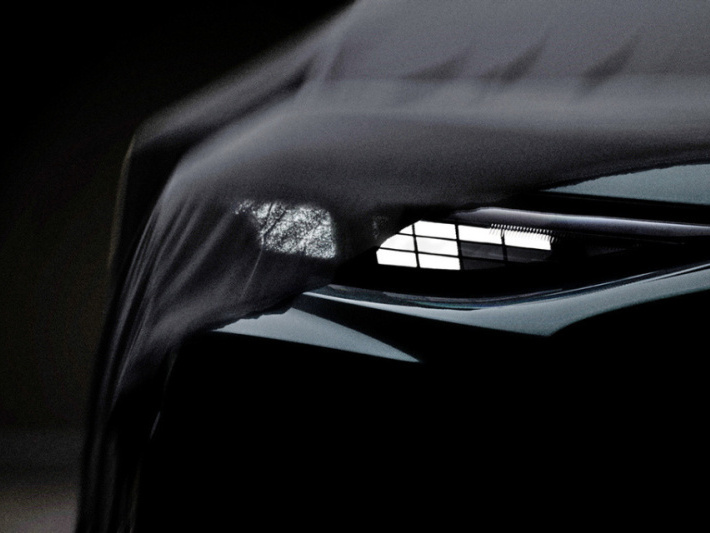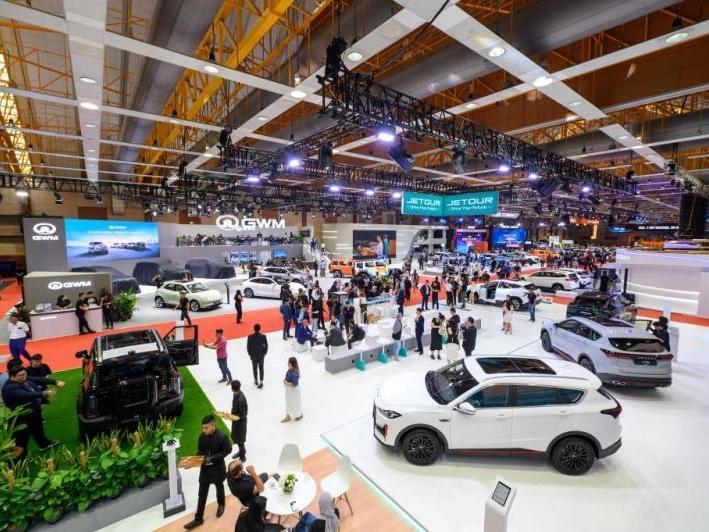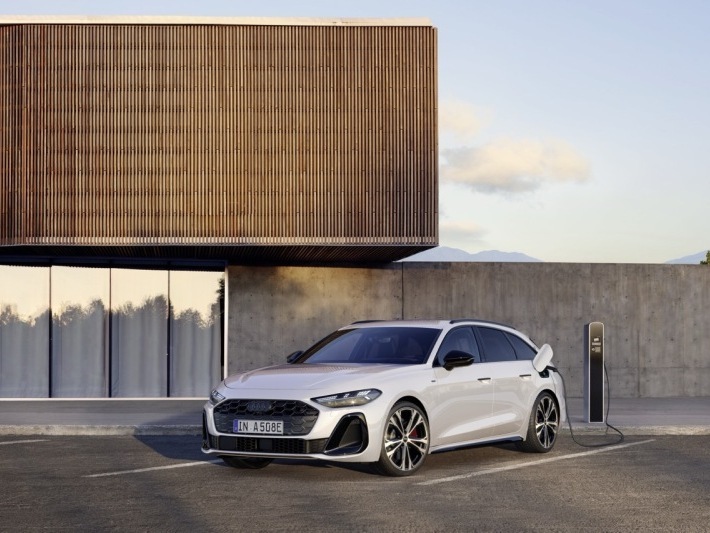Q
How many injectors does Audi RS3 have?
As a high-performance compact car, the Audi RS3 is equipped with a 2.5-liter TFSI five-cylinder turbocharged engine. This engine comes with five fuel injectors, one for each cylinder. This design ensures precise fuel injection and efficient combustion, thereby enhancing power output and fuel economy. For Malaysian car enthusiasts, the RS3's inline-five engine is not only well-known for its unique engine sound but also highly regarded for its outstanding performance. This engine can produce around 400 horsepower. Paired with a seven-speed dual-clutch transmission and the quattro all-wheel-drive system, it offers a more exhilarating driving experience.
It's worth mentioning that modern high-performance engines generally adopt the design of one injector per cylinder, which helps optimize fuel atomization, reduce emissions, and improve power response. Audi's TFSI technology combines turbocharging with direct fuel injection, further boosting engine efficiency. These technical details are particularly important in Malaysia's hot and rainy climate because they ensure that the engine can perform stably in various environments.
Special Disclaimer: This content is published by users and does not represent the views or position of PCauto.
Related Q&A
Q
Is the 2023 Audi RS 3 good for daily driving?
The 2023 Audi RS 3 is a high-performance compact sedan that fits Malaysian daily driving needs like a glove. Under the hood, that 2.5-liter five-cylinder turbo engine pumps out a healthy 400 horsepower, mated to a 7-speed dual-clutch gearbox. It's not just quick off the line; the shifts are super smooth too, making it perfect whether you're crawling through city traffic or stretching its legs on the highway.
Audi's done a great job tuning the suspension – it strikes a really nice balance between comfort and sportiness. Even on Malaysia's less-than-perfect roads, it still delivers a stable, composed ride. Step inside, and you're greeted with high-quality materials everywhere, plus the latest MMI infotainment system that hooks up seamlessly with Apple CarPlay and Android Auto. So it's got the tech cred and the practicality covered.
Another big plus is the Quattro all-wheel-drive system. When the rain hits or the roads get slippery – which, let's face it, happens often enough here – it gives you that extra grip and confidence, making it ideal for Malaysia's unpredictable weather. Sure, the fuel economy isn't quite on par with your average family car, but if you're someone who craves performance, that's a small trade-off to make.
If your budget allows and you want a car that's just as happy being a daily runabout as it is putting a smile on your face when the road opens up, the RS 3 is definitely one to add to your shortlist.
Q
How does the 2023 Audi RS 3 compare to the BMW M2?
Both the 2023 Audi RS 3 and BMW M2 are high-performance compact cars, but they each bring their own distinct flavor to the table when it comes to design and driving dynamics.
The Audi RS 3 packs a punch with its 2.5-liter five-cylinder turbocharged engine, cranking out 400 horsepower. Paired with a seven-speed dual-clutch transmission and Audi's legendary Quattro all-wheel-drive system, this thing rockets from 0-100km/h in just 3.8 seconds. It's a solid pick for Malaysian drivers who value consistent handling and the confidence to tackle any weather condition.
On the flip side, the BMW M2 goes with a 3.0-liter inline-six turbo, pushing out a meaty 453 horsepower. It sticks to rear-wheel drive, giving you the choice between a six-speed manual – for those who love rowing their own gears – or an eight-speed automatic. The auto gets you from 0-100km/h in around 4.1 seconds. This one's all about driver engagement and that classic rear-drive feel, perfect for enthusiasts chasing that pure, unadulterated driving rush.
Inside, both cabins scream sportiness. The RS 3 leans into tech with its Virtual Cockpit, while the M2 keeps things a bit more traditional, focusing on the essentials for the driver.
Here in Malaysia, the RS 3's Quattro system is a real ace up its sleeve during the rainy season, offering way more grip on slippery roads. The M2 though? It's in its element on dry tarmac, where you can really exploit that rear-wheel drive for some sideways fun.
Practicality-wise, the RS 3's slightly more compact dimensions make it easier to zip around town. But the M2? Man, that wide-body stance gives it some serious road presence – it just looks the part of a proper performance machine.
At the end of the day, both are absolute beasts in the high-performance compact segment. Choosing between them really comes down to what you prioritize: the sure-footed tech and all-weather capability of the RS 3, or the raw driver focus and rear-drive thrills of the M2. It's all about personal taste and how you plan to use it most.
Q
What is the warranty on the 2023 Audi RS 3?
The 2023 Audi RS 3 in Malaysia comes with a factory warranty of 5 years or 100,000 kilometers, whichever comes first. This warranty covers repair costs resulting from manufacturing defects or material issues, but excludes components subject to normal wear and tear or damage caused by human error. On top of that, Audi Malaysia is throwing in 5 years of free maintenance for the RS 3, which takes care of consumables like engine oil and filters during regular services – a really handy perk for high-performance car owners.
It's worth highlighting that as part of Audi's high-performance lineup, the RS 3 is powered by a 2.5-liter TFSI five-cylinder turbocharged engine, cranking out 400 horsepower and 500 Nm of torque. Paired with a 7-speed S tronic gearbox and the legendary quattro all-wheel-drive system, it rockets from 0-100km/h in just 3.8 seconds. That kind of performance puts it right up there as a serious contender in its segment.
When buying a high-performance car like this in Malaysia, besides the warranty, it's smart to check out the insurance terms and the availability of service centers to ensure a hassle-free ownership experience down the line. Fortunately, Audi has a well-established dealer network and a professional after-sales service team in Malaysia, so owners can count on reliable support when they need it.
Q
How reliable is the 2023 Audi RS 3?
The 2023 Audi RS 3 stands out for its solid reliability. The 2.5-liter five-cylinder turbo engine under the hood has been battle-tested over the years, delivering consistent power and impressive durability. Pair that with the refined 7-speed dual-clutch gearbox—shifts are smooth, and it’s proven to be pretty trouble-free. Here in Malaysia’s tropical heat, the RS 3’s cooling system and electronics hold up well, making it right at home in our local driving conditions.
Then there’s Audi’s Quattro all-wheel-drive system—this thing offers killer grip, especially handy during the rainy season when roads get slippery, giving you that extra peace of mind. Inside, the materials feel premium, and tech like the Virtual Cockpit and driver-assistance features have clearly been put through their paces; they’re built to last without throwing up annoying glitches down the line.
For performance car enthusiasts, the RS 3’s maintenance costs are actually quite reasonable, and sticking to regular servicing should keep it running strong for ages. When it comes to used car value retention, the RS 3 sits around the middle of the pack in Malaysia, but let’s be real—its sheer driving fun and the Audi badge still pull in plenty of buyers. If you’re thinking about picking one up, my advice is to go through official channels and stick to the factory maintenance schedule. Do that, and this thing should keep thrilling you for years to come.
Q
What is the cargo space of the 2023 Audi RS 3?
The 2023 Audi RS 3, a high-performance compact sedan, offers 282 liters of trunk space – enough for daily use, but maybe a bit tight if you're hauling a lot of gear. The good news? The rear seats fold down in a 40:20:40 split, letting you expand that cargo area when needed, which adds a decent amount of flexibility. Over in Malaysia, this car is a hit with performance enthusiasts, thanks to its punchy 2.5-liter five-cylinder turbo engine and quattro all-wheel drive. Sure, it's more about driving thrills than being a cargo hauler, but for city commutes or short trips, that trunk space should do the job just fine. Let's be real though – high-performance cars often trade some space and practicality for sharper handling, and the RS 3 is no exception to that rule you see across the segment. If you need serious load-lugging ability, you might want to start eyeing an SUV or wagon instead.
Q
Does the 2023 Audi RS 3 have all-wheel drive?
Yep, the 2023 Audi RS 3 comes standard with Audi's legendary quattro all-wheel drive system. This thing intelligently shuffles power between the front and rear axles based on road conditions and what you're trying to do behind the wheel, serving up awesome grip and handling stability. It's a total boss for Malaysia's tricky roads – whether it's rainy and slippery or you're carving through a fast corner, it just nails it. As a high-performance compact sedan, the RS 3 packs a 2.5-liter five-cylinder turbo engine cranking out 400 horsepower, mated to a seven-speed dual-clutch gearbox. That translates to a 0-100km/h sprint in just 3.8 seconds, and that quattro system? It's the real hero making sure all that muscle gets put down properly. Over here in Malaysia, AWD cars are getting more and more love. They handle the monsoon season's slippery stuff like a champ, and even on dry roads, they give a more engaging, sporty drive. And hey, Audi's quattro tech has come a long way over the years – it's lighter and way quicker to react now. On the RS 3, there's even that rear axle torque vectoring, which makes cornering feel sharper and more agile. So, for Malaysian petrolheads who want both performance and day-to-day usability, the 2023 RS 3's all-wheel drive system is definitely a solid win.
Q
What is the interior like in the 2023 Audi RS 3?
The 2023 Audi RS 3's interior design stays true to the brand's signature blend of sophistication and sportiness. It's decked out with high-quality materials like Nappa leather, aluminum trim, and carbon fiber accents. The tech factor is strong too, thanks to the 12.3-inch fully digital instrument cluster and the 10.1-inch central touchscreen. The seats are sporty one-piece units that offer excellent support without skimping on comfort – a real plus for those long drives in Malaysia's warm weather.
Step inside, and you'll find nice touches like the Bang & Olufsen premium sound system, ambient lighting, and those exclusive RS badges, all of which crank up the luxury and make the car feel that much more personal. Being a high-performance machine, the RS 3 gets a flat-bottom steering wheel with shift paddles, and when paired with Audi's Virtual Cockpit, it puts all the vital driving info right at the driver's fingertips.
For Malaysian buyers, the RS 3's interior hits the sweet spot between daily-driving comfort and performance car attitude. Audi's MMI infotainment system, which supports Apple CarPlay and Android Auto, is a user-friendly touch that makes connecting your smartphone a breeze – perfect for local drivers. And let's not forget the solid sound insulation; even when you're cruising on the highway, the cabin stays nice and quiet. That's a big deal given how much time we spend on Malaysia's expressways.
Q
What is the 0-60 mph time for the 2023 Audi RS 3?
The 2023 Audi RS 3 clocks in at an official 3.8 seconds for the 0-60 mph (that's roughly 0-96 km/h) sprint. That kind of zip comes courtesy of its 2.5-liter five-cylinder turbo engine, cranking out 400 horsepower and 500 Nm of torque. Pair that with a 7-speed dual-clutch gearbox and Audi's quattro all-wheel drive, and you've got acceleration that pins you back and handling that inspires confidence, no question.
For Malaysian petrolheads, the RS 3 isn't just a daily driver – it can seriously bring the heat on track days too. And let's not forget that iconic five-cylinder soundtrack; it's music to any performance car fan's ears. Throw in the sport suspension and dynamic steering system, and the driving experience gets even better.
If you're into high-performance sedans, it's worth checking out the usual suspects in this class, like the Mercedes-AMG A 45 S or the BMW M2. They each have their own strengths in terms of performance and styling. But the RS 3? With its unique five-banger and Audi's tech wizardry, it's still a really strong contender in the segment.
Q
What type of engine does the 2023 Audi RS 3 have?
The 2023 Audi RS 3 packs a 2.5-liter TFSI inline-five turbocharged engine, a powerplant legendary for its unique five-cylinder layout and blistering performance. Cranking out 400 horsepower and 500 Nm of peak torque, paired with a 7-speed S tronic dual-clutch gearbox and quattro all-wheel drive, it rockets from 0-100 km/h in just 3.8 seconds – that's some serious grunt. For Malaysian petrolheads, this engine isn't just carrying forward the Audi RS lineage's track DNA; its compact size and efficient turbo tech make it a solid fit for our diverse local driving conditions, dishing out that surging power whether you're navigating city traffic or cruising the highways. And let's not forget that iconic five-cylinder soundtrack – Audi's done a bang-up job tuning the exhaust to blend deep, throaty rumbles with high-revving howls, taking the driving fun up another notch. On top of all that, this engine also features advanced fuel injection tech and lightweight construction, so it's not just about raw performance; it actually keeps fuel economy in check too. For Malaysian buyers who want that perfect sweet spot between performance and practicality, this one's definitely worth a look.
Q
Does the RS3 have a Lamborghini engine?
The Audi RS3 doesn't just slot a Lamborghini engine under its hood, but the 2.5-liter TFSI five-cylinder turbocharged powerplant it does carry shares some tech DNA with Lambo. After all, both Audi and Lamborghini are under the Volkswagen Group umbrella, so they tap into shared technical resources. This five-cylinder is an Audi legend, renowned for its high-revving nature and that iconic, spine-tingling soundtrack. We're talking 400 horsepower and 480 Nm of torque here—seriously impressive grunt. Over in Malaysia, the RS3 has built a solid following among performance fans thanks to its compact size paired with that brute force. Sure, it's not a Lambo engine, but this Audi five-pot has serious track credibility, even picking up international engine awards more than once. It's worth noting how VW Group's internal tech sharing benefits so many brands. Take the Lamborghini Huracán's V10, for example—that traces its roots back to the Audi R8's engine tech. But this isn't just a simple swap; it's all about tweaking and optimizing to fit each brand's needs, making sure every car keeps its own distinct driving character.
Popular Cars
Model Year
Car Compare
Car Photo
Latest Q&A
Q
Does the 2019 Golf GTI have a timing belt or chain?
The 2019 Golf GTI uses a timing chain instead of a timing belt—a design that offers better durability and lower maintenance costs. Typically, a chain lasts as long as the engine itself and rarely needs replacement, whereas a belt requires inspection or replacement every 60,000 to 100,000 km. If neglected, a worn belt can snap and cause severe engine damage.
VW’s EA888 engine family has long relied on chain-driven systems, which are relatively quiet and highly reliable. That said, it’s crucial to periodically check the tensioner’s condition. Some earlier models experienced timing issues due to tensioner design flaws, but this was addressed in the 2019 version.
For performance enthusiasts, a chain system handles high-revving stress better, making it a common choice for hot hatches like the GTI. For daily driving, just stick to VW 50400/50700-spec oil as recommended in the manual—proper lubrication keeps the chain system healthy long-term.
One heads-up: If you hear noticeable metallic rattling near the front of the engine, have the guides or tensioner inspected ASAP. Unlike the telltale belt squeal before failure, this noise is a classic sign of chain-related wear.
Q
What is the recall on the 2019 GTI?
The 2019 Volkswagen Golf GTI was subject to a safety recall addressing two potential issues. First, the fuel pump control unit software could malfunction, potentially causing engine stalling in rare cases. Second, some vehicles might have rear suspension stabilizer link bolts that weren't tightened to specification, posing a loosening risk. Owners can visit authorized dealers for free software updates or bolt retightening.
These proactive recalls demonstrate Volkswagen's commitment to safety. Dealers often handle outstanding recall items during routine maintenance.
For performance-oriented models like the GTI, it's wise to go beyond recall checks. Pay close attention to the turbo system, DSG transmission fluid, and brake wear—these components endure more stress during spirited driving. If warning lights appear or you notice unusual noises, get a professional inspection promptly. Keeping the car in top shape ensures you can fully enjoy its dynamic capabilities.
Q
Does the 2019 GTI require premium gas?
The 2019 GTI does recommend using high-octane fuel (typically RON 95 or above). Its 2.0L turbocharged engine has a relatively high compression ratio, and premium gas ensures optimal performance while reducing knock risk. It also helps maintain engine cleanliness and long-term reliability.
While the car may tolerate lower-octane fuel (like RON 92), you’d see slightly reduced power output and fuel efficiency. Over time, it could also affect engine longevity. Turbocharged engines are particularly sensitive to octane ratings since turbos generate higher heat and pressure—high-octane fuel handles these conditions better.
Mixing different fuel grades occasionally won’t hurt, but sticking to the manufacturer’s recommendation is ideal. Also, periodic fuel additive treatments can help clean carbon buildup, especially for direct-injection engines.
One more thing: even with the same octane rating, fuel additive packages vary by brand. So, picking a reputable gas station matters too.
Q
How long will a 2019 GTI last?
The lifespan of a 2019 GTI largely depends on maintenance and driving habits. With regular oil changes, transmission fluid replacements, and avoiding aggressive driving, it can easily clock over 200,000 kilometers—or even more. Its 2.0T engine and DSG gearbox are proven combos, and as long as you stick to the factory service schedule, mechanical reliability won’t be an issue.
Just keep in mind: turbocharged engines demand extra care. Always use the right spec full-synthetic oil and monitor the cooling system. Climate plays a role too—hot, humid conditions mean paying extra attention to rubber seals and electronics. Every 50,000 km, have the timing chain and high-pressure fuel pump inspected (key items for turbos).
Driving style matters. Don’t redline it constantly, and let the engine warm up properly after cold starts. Rustproofing helps long-term durability, so regular underbody washes are smart. Nail these details, and this car’s built to last.
Q
How fast is the 2019 GTI?
The 2019 GTI truly delivers when it comes to performance. Under the hood lies a punchy 2.0-liter turbocharged four-cylinder, churning out 228 horsepower and 350 Nm of torque. Whether you opt for the engaging 6-speed manual or the lightning-fast 7-speed DSG, this hot hatch rockets from 0-100 km/h in just 6.3 seconds, with an electronically limited top speed of 250 km/h.
What really sets the GTI apart is its razor-sharp handling. The sport-tuned suspension and electronic differential lock work together to deliver precise steering and rock-solid cornering stability. It’s the perfect blend of everyday practicality and proper driver’s car thrills—a well-rounded hot hatch in every sense.
For enthusiasts, the GTI’s tuning potential is massive. Many owners go for ECU remaps or intake/exhaust upgrades to squeeze out even more power. Just remember to keep things street-legal—safety and compliance should always come first. Around here, these pocket rockets have a solid following, and it’s easy to see why.
View MoreRelated News

Audi RS6 sedan version may return to compete fully with the BMW M5
WilliamNov 21, 2025

Audi TT Moment 2.0 Debuts This September on Porsche EV Platform
MichaelAug 1, 2025

Beyond Expectations: All-New Audi Q3 Coming June 16
RobertJun 13, 2025

Summarizing the 2025 Malaysia Auto Show, a large number of new cars were launched in Malaysia this year.
MichaelMay 12, 2025

Audi A5 Launches Its First PHEV Version, Accelerating from 0-100 km/h in Just 5.1 Seconds
JohnMar 27, 2025
View More


















Pros
Cons